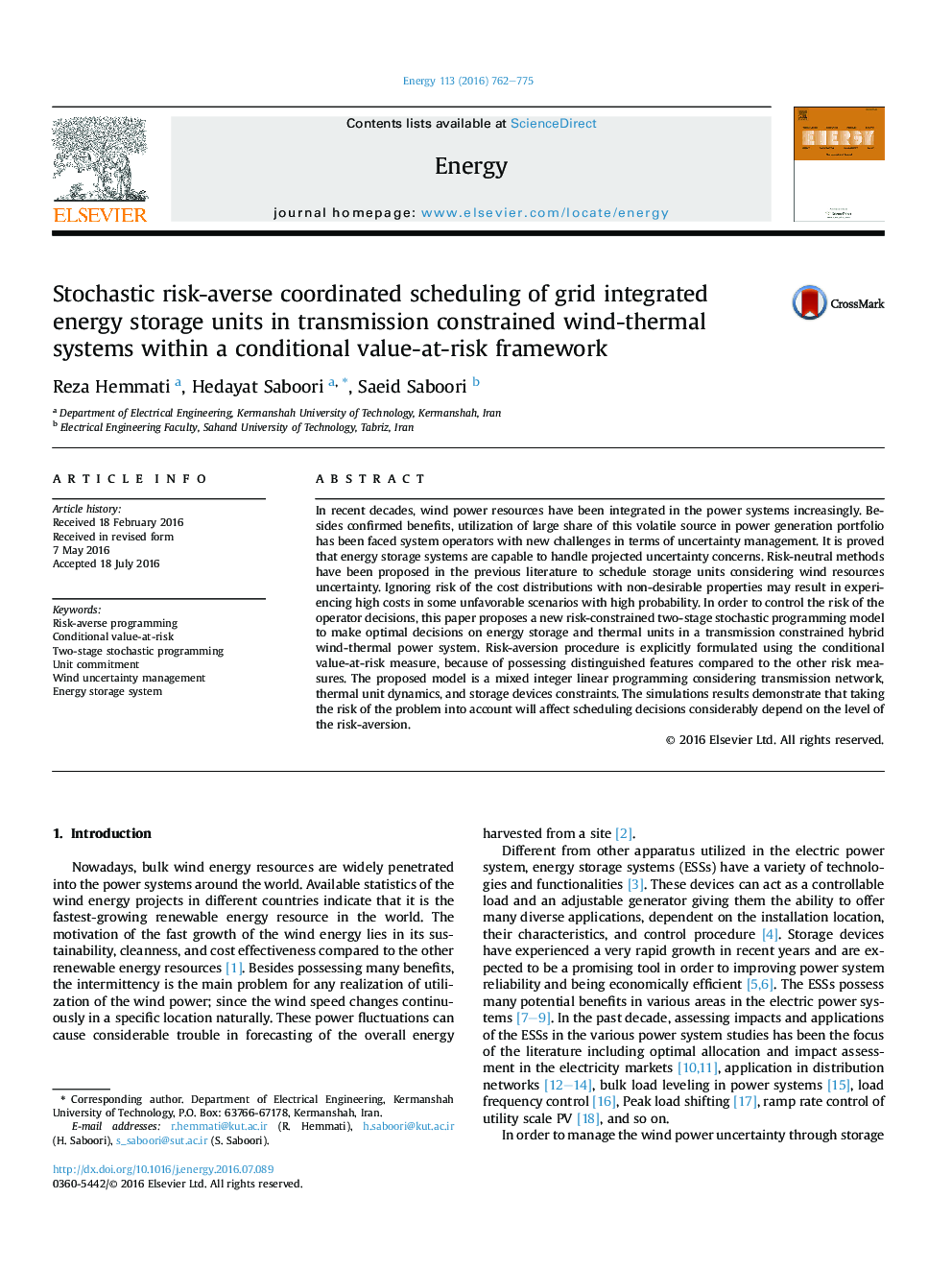| Article ID | Journal | Published Year | Pages | File Type |
|---|---|---|---|---|
| 1730780 | Energy | 2016 | 14 Pages |
•Risk of the operation decisions is handled by using risk-averse programming.•Conditional value-at-risk is used as risk measure.•Optimal risk level is obtained based on the cost/benefit analysis.•The proposed model is a two-stage stochastic mixed integer linear programming.•The unit commitment is integrated with ESSs and wind power penetration.
In recent decades, wind power resources have been integrated in the power systems increasingly. Besides confirmed benefits, utilization of large share of this volatile source in power generation portfolio has been faced system operators with new challenges in terms of uncertainty management. It is proved that energy storage systems are capable to handle projected uncertainty concerns. Risk-neutral methods have been proposed in the previous literature to schedule storage units considering wind resources uncertainty. Ignoring risk of the cost distributions with non-desirable properties may result in experiencing high costs in some unfavorable scenarios with high probability. In order to control the risk of the operator decisions, this paper proposes a new risk-constrained two-stage stochastic programming model to make optimal decisions on energy storage and thermal units in a transmission constrained hybrid wind-thermal power system. Risk-aversion procedure is explicitly formulated using the conditional value-at-risk measure, because of possessing distinguished features compared to the other risk measures. The proposed model is a mixed integer linear programming considering transmission network, thermal unit dynamics, and storage devices constraints. The simulations results demonstrate that taking the risk of the problem into account will affect scheduling decisions considerably depend on the level of the risk-aversion.
